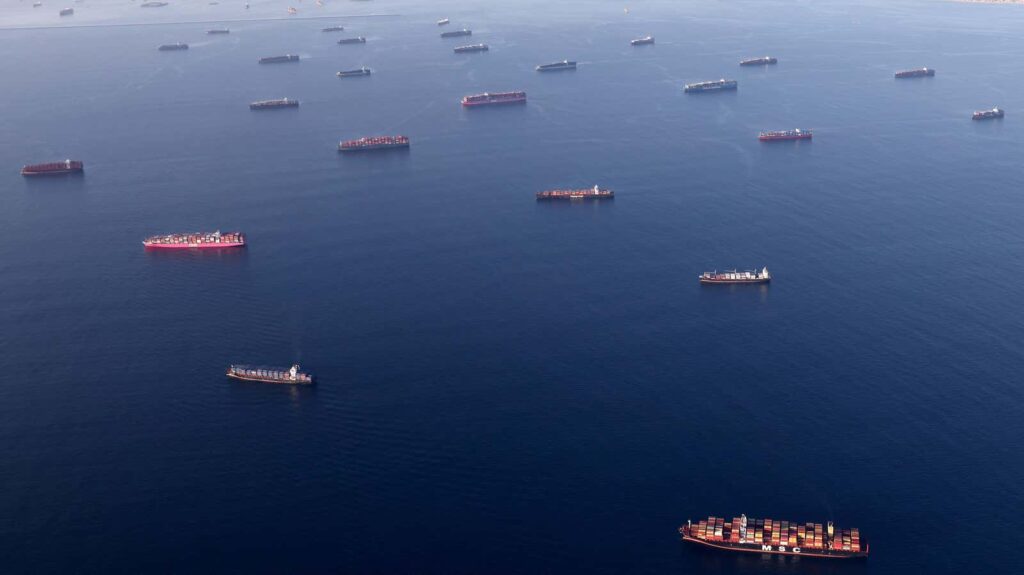While Paris Dominates Fashion Media, A Potential Disaster for the Fashion Industry Looms in the Pacific Ocean

A few cursory scrolls through social media today revealed that the Fashion Industry, and all the forms of media built around it, are firmly fixated on Europe as the various Fashion Weeks unfold. The spectacle is undeniable with every brand going to extraordinary lengths to set themselves apart. From Chanel evoking nostalgia with a 90’s style runway show to Balenciaga redefining (and possibly trolling) what a fashion looks like with a Simpsons collab, this season certainly brought new energy to what was becoming a stale routine.
The thing is though, while the fashion obsessed in America peer across the Atlantic, a potential disaster is looming just off the coast in the Pacific. All the pomp and pageantry put on by the Fashion Industry’s top brands is drawing attention from a potential break down in its global supply chain. The problem, in short, is that dozens of ships at any given time are being forced to anchor off shore and wait their turn to have their cargo unloaded. From there, further delays are occurring with loading cargo onto trucks and trains to deliver them to warehouses that are suffering from delays of their own. All of these delays cost fashion brands money and the costs are mounting.
Labor shortages and outdated infrastructure are being exacerbated by more cargo arriving at American ports than ever before. As companies and consumers alike are attempting to recover from the pandemic, demand for every kind of consumer product is surging and that includes clothing and accessories. There aren’t enough dock workers to move all these goods off the ships, there aren’t enough warehouse workers to process the goods at the ports, and there aren’t enough truck drivers and cargo train operators to deliver the goods to the companies that produced them.
The Fashion Industry moved production to Asia decades ago to save money but the global supply chain required to keep those costs low is failing at America’s ports. So what can fashion consumers do about it? Step one, just like any other addiction, is admitting that we have a problem. Over consumption of fashion goods comprises a significant portion of the cargo overwhelming our ports. If you aren’t an experienced longshoreman or truck driver then you can do your part by buying less and buying domestic (or at least production from Canada and Mexico).
This is not to take away anything from Fashion Weeks, they’re an art form to be admired in their own right. Let us not allow the art of Fashion to distract us from the issues Fashion over-consumption is causing. While the brands on display in Paris, and all the other Fashion Weeks, comprise an insignificant portion of overall clothing consumption, it is undeniable that they represent the industry as a whole. Therefore, the faults of that industry should be acknowledged along with the celebration of it’s art.
For now, it’s a few dozen ships at a time waiting offshore for a week or less. But global supply chain breakdown will grow exponentially if the status quo carries on. This is only a symptom of a much larger ailment. The ports of America’s West Coast are particularly susceptible because the enormous volume of goods produced in Asia have to enter through a small number of ports, causing a bottleneck effect. The labor issues caused by the pandemic have not caused this problem so much as exposed it to the public. The responsibility falls upon fashion enthusiasts to take notice and acknowledge their role in this pressing issue while admiring the runways of Paris, Milan, London and New York.
